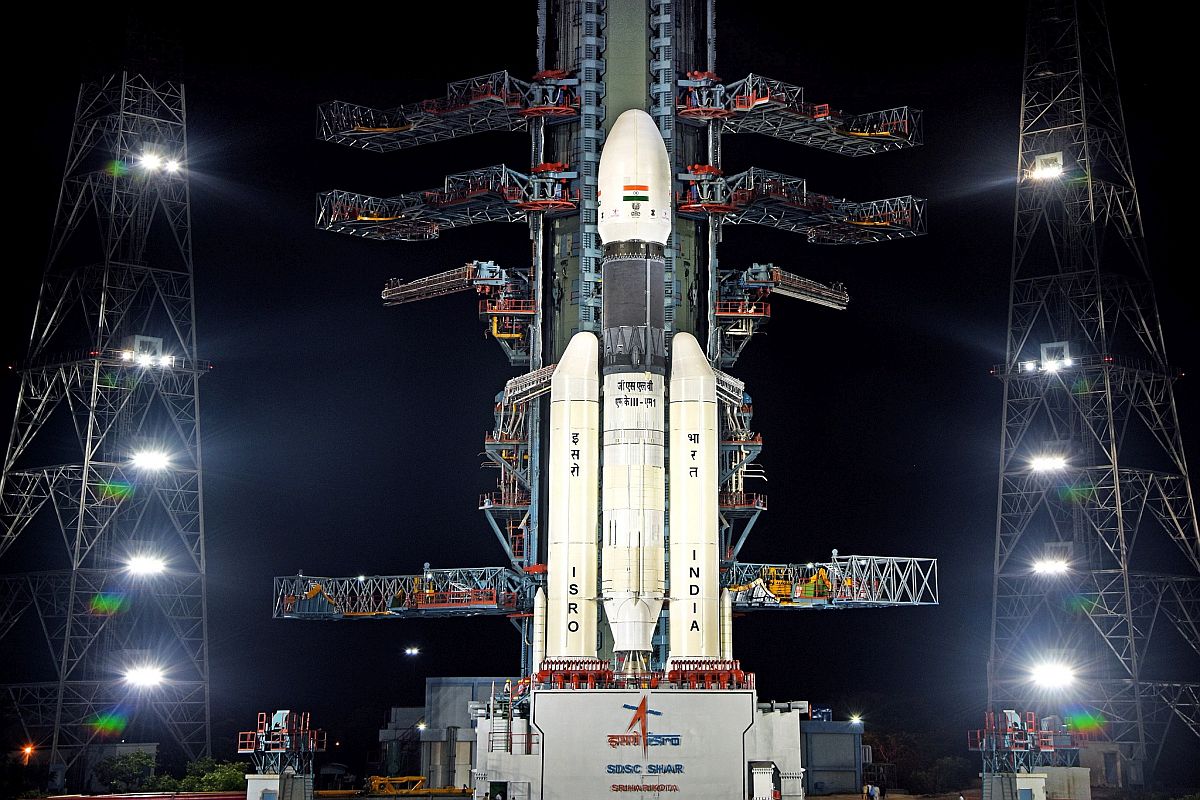Indian Space Research Organisation (ISRO) has rectified the fault in its Geosynchronous Satellite Launch Vehicle-Mark III (GSLV-Mk III) after its flight with Chandrayaan-2 spacecraft was aborted an hour before its lift-off in the wee hours of Monday.
Although there is no official word about the status of the rocket, ISRO officials were quoted by IANS as saying that the glitch has been rectified and that the launch could happen between July 20-23.
India’s ambitious mission to the Moon, Chandrayaan-2, was aborted after a “technical snag” was observed in the launch vehicle system.
The 640-tonne rocket Geosynchronous Satellite Launch Vehicle-Mark III (GSLV-Mk III) nicknamed “Baahubali” carrying the orbiter, lander, and rover was to take off at 2 hours 51 minutes, early on Monday morning from Sriharikota in Andhra Pradesh.
However, after first being put on hold 56 minutes before blast-off, the launch was scrapped because of a “technical snag”, ISRO said.
A revised launch date has not been announced yet.
However, ISRO has a window for launch from July 18 to 31. But, If the space agency misses it, Chandrayaan-2 may have to wait at least till September.
Following the snag, ISRO officials had said that it would take at least 10 days to resolve the issue.
The Rs 978 crore Chandrayaan-2 mission was a prestigious one as it aimed to make India as the fourth nation in the world to land and ride on the moon after the US, Russia and China.
Chandrayaan-2 is a sequel to Chandrayaan-1, India’s maiden unmanned moon mission which was announced by late Prime Minister Atal Bihari Vajpayee on the 56th Independence Day in 2003.
The spacecraft was launched successfully on October 22, 2008, from the Satish Dhawan Space Centre (SDSC), Sriharikota. The spacecraft with an initial weight of approximately 590 kg was launched on a Polar Satellite Launch Vehicle (PSLV) C 11.
By August 2009, the orbiter started witnessing technical issues which included failure of the star sensors. And due to poor thermal shielding, the Chandrayaan-1 stopped sending radio signals on August 28, 2009. ISRO speculated that it might have crashed on the moon’s surface.
The mission was terminated abruptly after 312 days as ISRO lost contact with the spacecraft on August 29, 2009.










